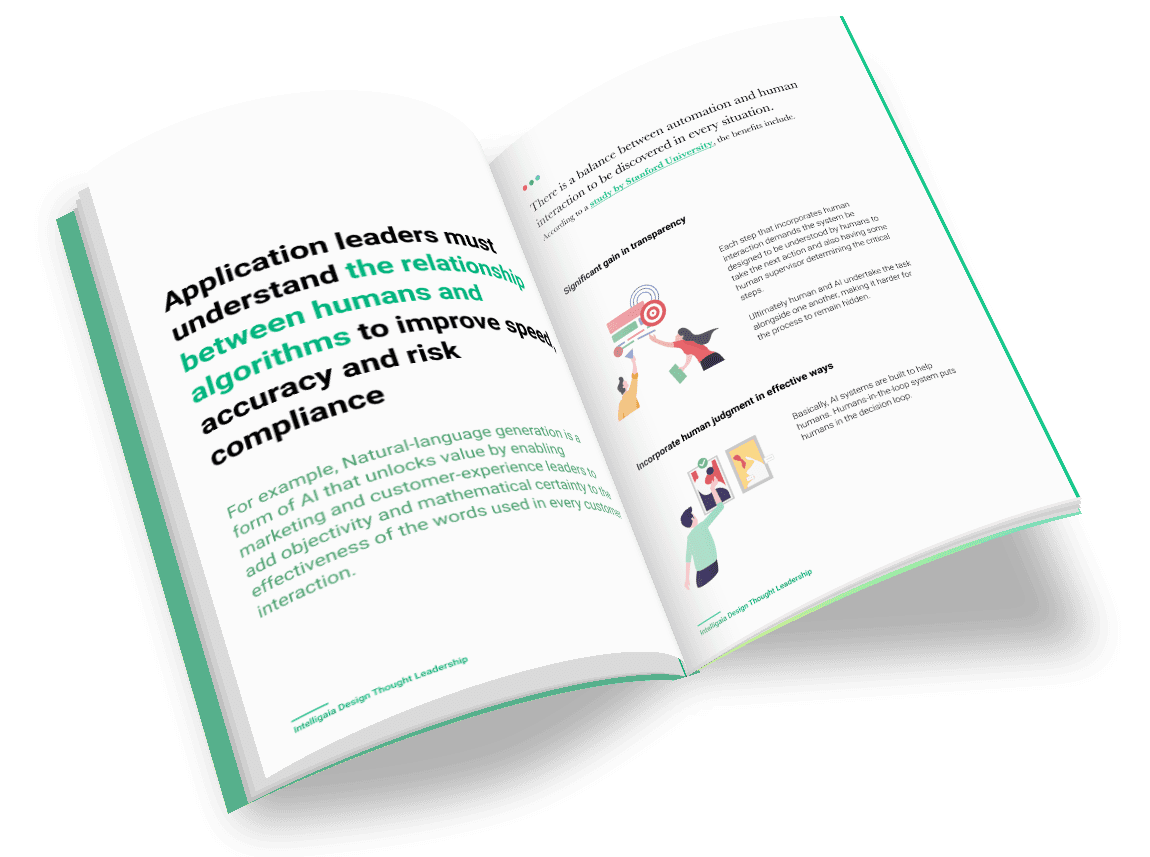
Designing with Human-In-The-Loop
A Human-Centered approach to AI wins people’s loyalty and ensures trust.
We are living in a world where digital adoption and transformation are happening at an unprecedented pace. In response to the pandemic, businesses across all industries are rapidly embracing digital technologies. At the heart of this transformation is a customer-centric operating model that leverages data-driven approaches to create relevant and valuable customer interactions. AI applications that focus on intelligent segmentation, content creation, and optimization of customer experiences are key to achieving this goal.
Seems like a futuristic world that we really need to prep for making Deeper Human Connections using AI
Businesses today are recognizing the importance of AI in creating compelling customer experiences. Tech and User Experience Leaders are actively researching and qualifying AI innovations to provide intelligent, convenient, and informed customer experiences. AI has the power to analyze and process vast amounts of data, including human behaviors and emotions, to create intent-based customer experiences.
The term “Human-Centered Artificial Intelligence” acknowledges the growing interaction between humans and AI. AI has the ability to learn, predict, suggest, and automate tasks. Its applications are improving across various sectors, including healthcare, e-commerce, content creation, news, and social media.
Not just AI, but Human(advisor/supervisor) Centered AI
Taking a human-centric approach to AI requires empathizing with people, shaping their future journeys, and aligning their needs with business outcomes. Designing and developing AI systems with empathy is crucial to ensure user acceptance and adoption. It involves training, calibrating, and incorporating AI-enabled systems in a human-in-the-loop architecture.
For example, natural-language generation is an AI-powered technology that enhances marketing and customer experience efforts by ensuring the effectiveness of words used in customer interactions.
There is a balance between automation and human interaction to be discovered in every situation. According to Stanford University, incorporating human interaction in AI systems leads to significant gains in transparency, incorporating human judgment effectively, and shifting the pressure away from building “perfect” algorithms. Human-in-the-loop design strategies often result in more powerful systems compared to fully automated or fully manual systems.
Cognitive Augmentation
AI excels when it augments human power and enhances business outcomes. Companies are prioritizing personalization and using AI to tailor content, products, and services to meet customers’ wants and preferences. AI-driven applications can mine vast amounts of real-time data to elevate the customer experience.
Vodafone, for example, partnered with Adobe to identify and predict customer segments, generating personalized messages for each segment. This led to a 40% increase in customer conversions.
Building Ethical AI
As AI advances, organizations face new concerns. AI limitations, social media growth, and content complexity have prompted social media platforms to invest in human workforces for content moderation. Organizations must prioritize AI ethics and human interest concerns as they leverage human-in-the-loop AI for business outcomes.
Leaders looking to leverage AI should formalize organizational accountability for AI ethics, evaluate the disposition to overlook AI ethics and human interest concerns, and take a process-centric approach to identify and mitigate risks associated with human-in-the-loop AI.
An augmented workforce is the key to success
AI is rapidly evolving and becoming more accessible and cost-effective. Human-centered AI, which focuses on augmenting the workforce to improve customer and employee experiences, directly contributes to achieving business goals.
Improving Customer Experience using AI
AI has the potential to transform customer experience through a deeper understanding of customer behavior. However, leaders face challenges in demonstrating the value and maintaining stakeholder buy-in. To overcome these challenges, organizations should map CX challenges to AI solutions, prioritize areas with high friction, and integrate ROI measurements into deployment strategies.
Business Execution using Design Principles for AI
Designing AI solutions should be strategic and aimed at achieving business results, not just operational improvements. Strategic AI applications anticipate the future, act with little or no intervention, elevate the physical, connect better with customers, uncover the invisible, and manage risk.
Designing with Purpose: Putting People First
Designers play a crucial role in shaping the implementation and interaction of AI systems. By focusing on human needs, upholding human values, and designing for augmentation rather than automation, designers can create meaningful and inclusive AI experiences. AI should be seen as a tool that selectively includes human participation, harnessing the efficiency of intelligent automation while retaining a sense of meaning.
How ready is your business for AI?
Organizations embarking on digital transformation with AI should center their design thinking around the human experience. Design thinking, coupled with AI, can empower organizations to automate processes, engage customers, and create new ways of doing business. Intelligaia can help organizations utilize AI through a design thinking approach that focuses on productivity, process automation, customer engagement, and new business opportunities.







